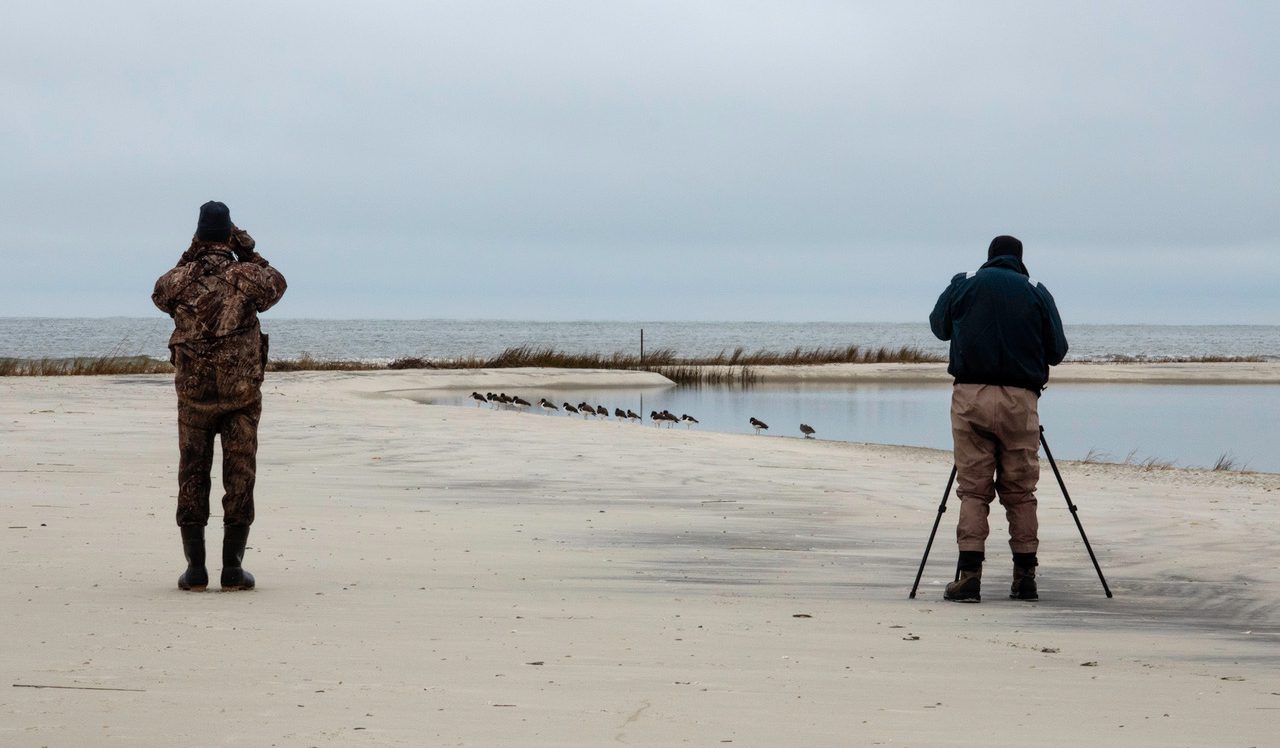121st Christmas Bird Count at North Inlet-Winyah Bay
Each year, from December 14th through January 5th, tens of thousands of volunteers across North America head out by land and water to contribute to the Audubon Christmas Bird Count. Audubon and other organizations use the data collected through this long-running census (ongoing since 1901) in combination with other surveys, such as the Breeding Bird Survey, to assess the health of bird populations, and to help guide conservation action.
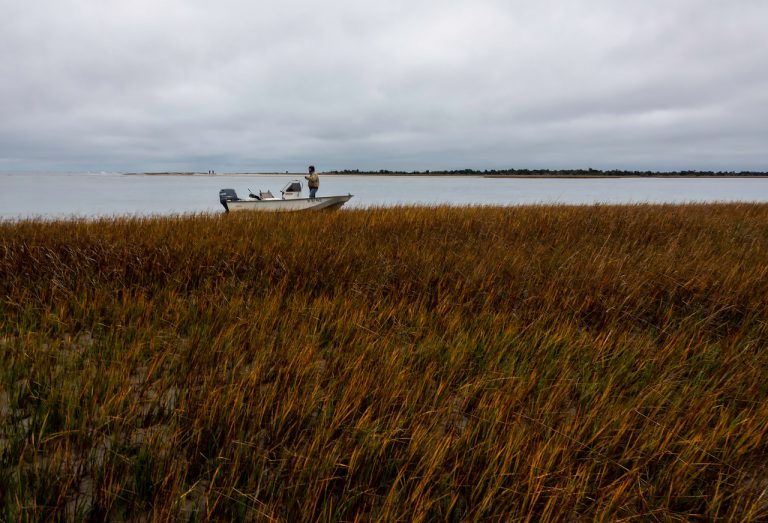
This year four volunteers covered the North Inlet and Winyah Bay portions of the Winyah Bay count area by boat, foot and car, a total of 17.5 miles over about 5 hours under cool and overcast conditions. Each count takes place in an established 15-mile wide diameter circle, and is organized by a count compiler. Count volunteers follow specified routes through the designated circle, counting every bird they see or hear all day. Highlights for the team this year were two Marbled Godwits, all three Marsh Sparrow species seen in one location, and a Piping Plover. They were also able to get close enough to read bands on three American Oystercatchers on North Island. The bands were green, which indicates they were banded in North Carolina.
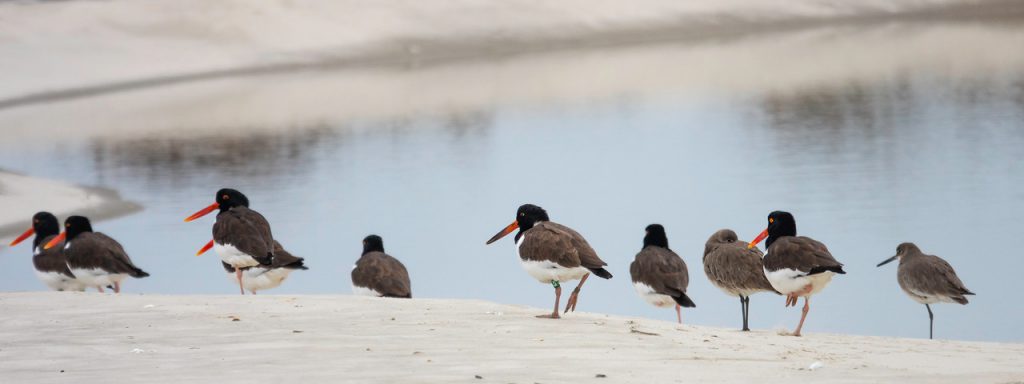
So how does this year’s count compare to previous years? When comparing counts for a given area between years, it is important to remember that the number of volunteers available, weather conditions on the day of the count, and also weather events prior to the count will impact the numbers of bird observed. Long term trends for species observed within the Winyah Bay area have been generally steady over the past 15 years with some notable year-to-year variations. For example, no Wood Storks were observed this year; on average around 30 are seen with a record high in 2017 of 105. Fewer American White Pelicans were also seen this year, 67, compared to 471 observed last year. No White Ibis were seen this year; generally, 500 to 1,000 are counted, with a peak of 2,442 in 2017. Only 2 Bald Eagles were spotted during the survey, but 67 were seen last year. On the other hand, over 2,000 Dunlin and 800 Short-billed Dowitchers were seen this year, the highest numbers in the past 5 years.
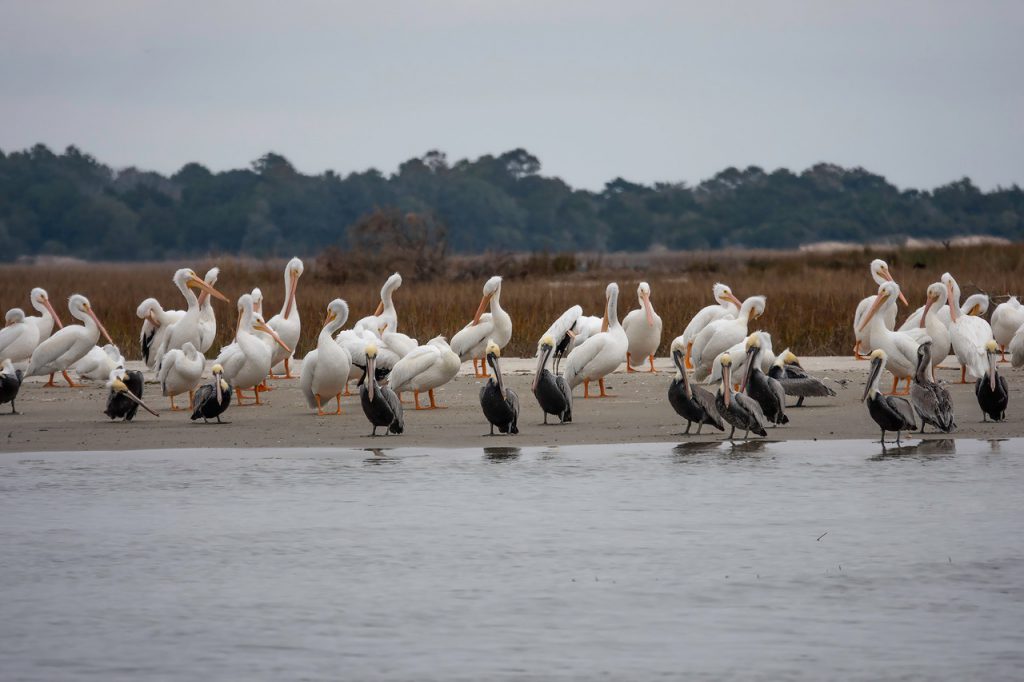
In recent years, the South Carolina coast has become increasingly popular not only with humans from northern climates, but with some of our traditionally southern ranging bird species. Roseate Spoonbills, once very common in parts of the Southeast, virtually disappeared from the United States by the 1860s as a result of plume hunters. Through preservation efforts, the species was able to successfully recolonize the Florida and Texas coasts surrounding the Gulf. Now, as warmer weather lasts longer in South Carolina wetlands and their prey season is extended, Spoonbills are spending more time along our coast, and it is believed that it is only a matter of time before they decided to settle in and breed here. From 2009, Roseate Spoonbill numbers have annually increased in South Carolina by 112%, compared to an increase of 8.9% over the same time period across their entire range in the southeast and gulf coasts. Similarly, American White Pelicans, commonly seen in Mexico and along the Gulf Coast during the winter, have discovered South Carolina as a winter retreat. Historically, human disturbance and destruction of foraging and breeding habitat have been major threats to this species. White Pelican populations started to recover in the 1960s, and now there may be so many birds that their range is spreading. Flocks have been hanging out on Bear Island in the ACE Basin and nearby Nemours Plantation, at Cape Romain and near North and South Island. South Carolina White Pelican counts have increased by 32% per year, compared to the range-wide increase of 12%.
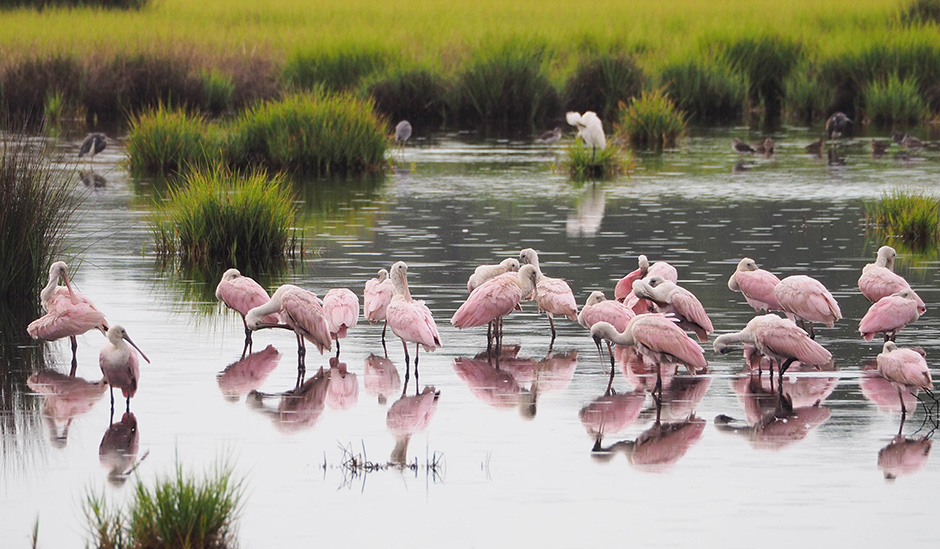
While some species appear to be expanding their populations and ranges, for many coastal species population trends are a concern. From 2009, state-wide the count of American Oystercatchers has trended down at 0.63% per year, Lesser Yellowlegs 0.67% per year, Red Knots 1.4% per year, and Common Terns 21% per year. Counts of Piping plover, considered an endangered or threatened species in all parts of its range, have trended up slightly in South Carolina, while overall decreasing by 0.59% across their range. These birds are dependent upon our coasts for places to rest, feed, and raise young. They challenged by climate change, coastal development, pollution and overfishing.


